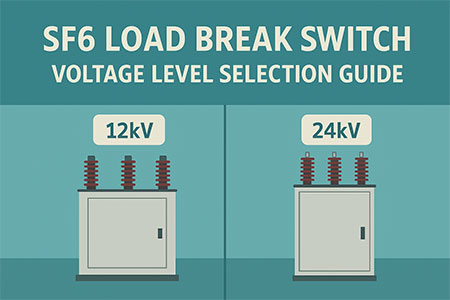In medium voltage distribution systems, the SF6 load break switch (LBS) plays a vital role in ensuring safe circuit control and reliable power delivery. When planning a new installation or upgrading an existing network, choosing the right voltage level—typically 12kV or 24kV—is an important technical and economic decision that affects long-term system performance.
A 12kV SF6 load break switch is widely used in standard urban distribution systems, industrial plants, and compact substations. It offers adequate insulation and breaking capacity for short-to-medium network distances, with advantages in compact size, cost efficiency, and simplified maintenance. For users dealing with routine network expansion or secondary distribution applications, 12kV remains a practical and widely supported option.

By contrast, a 24kV SF6 load break switch is designed for more demanding grid environments. It supports longer transmission distances, higher load density, and integration with renewable energy sources such as solar or wind power. The enhanced voltage rating provides better insulation performance, lower transmission loss, and higher safety margins—key factors when systems operate in regions with voltage fluctuations or harsher environmental conditions.
When selecting between 12kV and 24kV, engineers should consider the following:
- The total length and configuration of the distribution network
- Future capacity expansion or renewable energy integration plans
- Environmental factors such as altitude, humidity, and pollution level
- Local grid standards and compatibility with existing switchgear
Ultimately, the correct voltage choice balances performance with practicality. Both levels deliver safe, stable switching operations when matched to the proper application.
Putai provides a range of SF6 load break switches that combine durable design with optimized voltage options for utility, industrial, and renewable applications. Each unit is engineered for reliability, easy installation, and long service life.